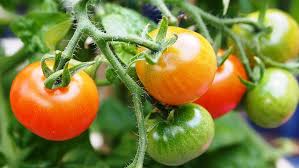Tomatoes are an essential part of our diet and are widely cultivated all over the world. Previously, people used to grow tomatoes on a small scale, and it was considered a hobby. But nowadays, with global population growth, cultivation of tomatoes has become a business yielding benefits in the form of both food security and economic opportunity. Ensuring that tomato plants produce an abundance of flowers is key to a successful harvest. Flowers transform into fruits, so it’s important to make sure your tomato plant is blooming from beginning to end. In this blog, you’ll learn about natural ways to increase tomato flowering and thereby your harvest Explore ways to enhance tomato flowering at Succulent Alley.
Soil preparation – Soil is the foundation for any plant, and tomatoes are no different. Tomatoes require rich, well-draining soil that is slightly acidic (pH 6-6.8). Nutrient-rich soil will help the plant produce more flowers. It’s essential to mix in organic matter, such as compost, before planting. This will ensure that the soil contains an adequate amount of essential nutrients required for healthy tomato growth.
Watering – Tomatoes need consistent watering, especially during warm weather. Water-deprived plants may not produce as many flowers as well-watered ones. The best time to water is early in the morning or late in the evening. When watering, make sure the soil is moist, but not waterlogged, because excessively damp soil may cause the plant’s roots to rot.
Pruning – Pruning can help stimulate more flowers by allowing the plant to focus its energy on flowering and fruiting. Pinching off the top of the main stem once it reaches a certain height will encourage lateral growth. Remove all suckers (the small branches that grow between the main stem and branches) to help airflow through the plant. The best time to prune is when the plant is still young.
Companion planting – Companion planting is an effective method of increasing tomato flowering. This is because some plants repel pests and attract beneficial insects that pollinate the flowers. Basil and marigold are examples of plants that can be planted alongside tomatoes. Basil repels pests, while marigolds attract beneficial insects that pollinate the flowers.
Fertilizers – Fertilizers can boost the growth and flowering of tomato plants. Use a balanced fertilizer that contains more potassium and phosphorus than nitrogen. Nitrogen helps vegetative growth, while potassium and phosphorus boost flowering and fruiting. A low-nitrogen fertilizer will help prevent the plant from growing too tall and lush, which can slow down the flowering process.
Conclusion: As you can see, there are various natural methods to increase tomato flowering and ultimately enhance your harvest. By preparing the soil, watering adequately, pruning, companion planting, and choosing the right fertilizers, you will encourage your tomato plants to produce abundant flowers, leading to more mouth-watering tomatoes. Remember to be patient; flowers and fruit production take time, so it’s essential to take care of your plants throughout the growing season. Follow these natural techniques and get ready to enjoy a bumper tomato crop.



